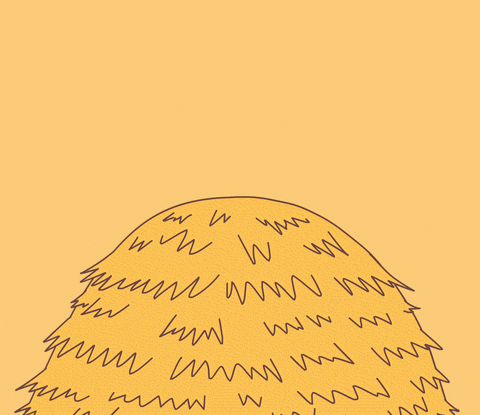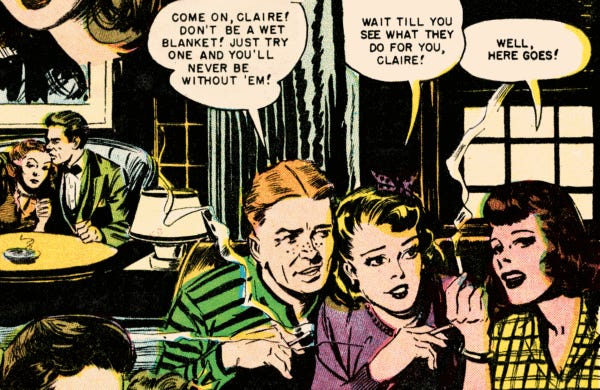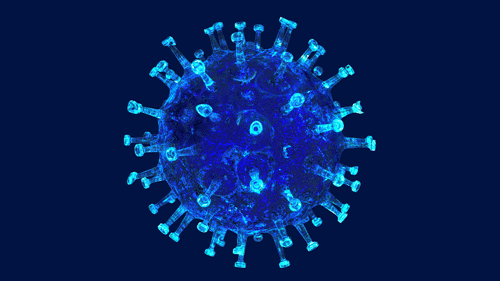How Cannabinoids Block COVID-19
Cannabinoids Block Cellular Entry of SARS-CoV-2 and the Emerging Variants; van Breeman et al., 2022
Few things before we begin:
Happy New Year, all the best for you, my readers. I appreciate your support SO much.
You can follow me on Twitter @TyQuig and Instagram @thetab_psychedelicscience
Part of this newsletter is 24/7 office hours. If you have a question about psychedelic science, send it my way.
Let’s break down the recently published study…
Cannabinoids Block Cellular Entry of SARS-CoV-2 and the Emerging Variants
Key Takeaways
Hemp (Cannabis sativa) is a renaissance plant; it contains an apothecary of molecules with extremely diverse applications. Of note, hemp contains cannabinoids, a class of chemicals defined by their ability to bind cannabinoid receptors in our bodies.
Two cannabinoids, cannabidiolic acid (CBDA) and cannabigerolic acid (CBGA) can bind to the SARS-CoV-2 virus, preventing the virus from infecting cells.
The cannabinoids block infection of the original strain, as well as the alpha and beta variants.
These cannabinoids prevent infection in a similar fashion to our own neutralizing antibodies. HOWEVER, they have the added advantage of binding to a part of the virus less likely to induce resistance.
More research is needed to match the bioavailability of these cannabinoids to the amount needed to block SARS-CoV-2 cell entry.
The combination of vaccination and small molecule therapeutics will create a more challenging environment for COVID to infect, spread, and mutate.
Why they did it
As of December 2021, we are at 272 million reported SARS-CoV-2 (COVID) cases, 5.3 million deaths, and 600,000 new cases reported daily.
As the virus continues to mingle sinisterly in our communities, concerning variants are emerging which seem to have a competitive advantage over the original strain.
There are multiple components of the virus and multiple stages in its infection cycle that we can aim our therapeutic guns at. Our battles with HIV and hepatitis C have taught us to aim at blocking the virus from binding to cells.
To enter cells, SARS-CoV-2 virus binds to a cell receptor called ACE2. The virus can’t bind to ACE2 if its binding site is blocked. A binding site is the spot on a protein that connects to a receptor. The COVID binding site is located on spike proteins which give the virus its characteristic “crown” or “corona”.
Molecular binding is extremely complex, requiring a specific pattern of molecular binding forces which is difficult to design.
Our other option is to look at the vast array of molecules Mother Nature has already created. This is exactly what these researchers did, starting with hemp (Cannabis sativa) which contains hundreds of small molecules already used for therapeutic applications.
Experiment #1 - Identification of CBDA & CBGA as SARS-CoV-2 binding site ligands
They attached the SARS-CoV-2 binding site to magnetic beads.
They mixed the beads with hemp extract. Hemp compounds which can bind to the binding site will bind to the beads.
After waiting some time, they put a magnetic rod into the bead-hemp soup, pulling out the beads now attached to hemp compounds that can bind to the SARS-CoV-2 ACE2 binding site.
They extracted the molecules bound to the beads, and identified them as CBDA & CBDG using liquid chromatography.

Experiment #2 - Confirmed that CBDA & CBGA block SARS-CoV-2 entry into cells
They exposed live SARS-CoV-2 virus to CBDA, CBGA, and a control, and then infected cells. Less of the cells infected with CBDA/CBDG-exposed virus contained virus RNA.
To quantify the level at which the cannabinoids inhibit SARS-CoV-2 infection, they inserted the COVID spike proteins into lentiviral particles, which they exposed to various concentrations of CBDA & CBGA.
Lentiviral particles are basically inert viruses which can be customized with important pieces of more dangerous viruses. They are used here to study the ability of CBDA and CBDG to block the binding site on the COVID spike protein
They validated this experiment using the authentic original strain of SARS-CoV-2 and found that the amount of CBDA and CBGA needed to reduced cell infections by half (IC50 value) was 24 and 37 ug/mL respectively.
They tested the efficacy of CBDA and CBGA on preventing infections by the alpha and beta variants, and found the same pattern, albeit slightly different IC50 values.

Binding properties of CBDA & CBGA
The binding of a molecule to a protein can be classified in two ways; orthosteric and allosteric. Orthosteric binding is when a molecule binds at the binding site. Allosteric binding is when a molecule binds at a spot other than the binding site, but its binding alters the protein structure so that the binding site is effectively hidden. To determine how CBDA and CBDG bind to SARS-CoV-2, they modeled the interaction in binding prediction software. It predicted that both cannabinoids can bind to the protein orthosterically, but that CBGA more likely binds allosterically.
This latter finding is important, as allosteric binding removes an evolutionary pressure from the virus to alter its binding site, which is how variants can resist our current vaccines. Thus, the use of small molecules such as CBDA and CBDG combined with our current vaccines give us a better shot at suppressing coronavirus spread.
My Take
Shmokin’ weed ain’t gonna prevent you from getting the virus, so don’t let anyone tell you that. However, it is super cool to think that one day, we might have an extremely safe, small molecule therapeutic originating from hemp in our arsenal to combat coronavirus. Before that happens, we need more data on how exactly to make CBDA and CBGA bioavailable, i.e., how to get it into our bloodstream in the right form and at a high enough level to effectively block the spike protein binding site of SARS-CoV-2.
I want to build what the authors mention about the use of CBDA/CBGA in combatting coronavirus. The SARS-CoV-2 virus is likely here to stay, in some fashion. The entire point is, not to get rid of the virus, but to make it as challenging as possible for it to get into cells to replicate. Less virus replication = less virus and less variants. By diversifying how we prevent the virus from entering cells, we increase our chances of success. The combination of our best weapons will lead us to a quicker victory. Not cannabinoids alone, not vaccines alone, not mask wearing alone. We as a collective must participate fully in this fight, with whatever tools we have at our disposal, to protect future generations against virus exposure.
I appreciate your feedback on how I did breaking down this science. Let me know in the comments:
Think more people should know about psychedelic science? Share my newsletter with your people, because your people are my people ✌🏽
📃 Here’s the paper:
van Breemen, R. B. et al. Cannabinoids Block Cellular Entry of SARS-CoV-2 and the Emerging Variants. J. Nat. Prod. acs.jnatprod.1c00946 (2022).
Available at ACS Publications.
From Around the Psychosphere
Just one, and its so so so important:
🎧 Listen to Cover Story, an investigative podcast co-produced by Psymposia and New York Magazine, about the culture of abuse in psychedelic therapy:
🎧 And further discussion of episodes from Plus Three, also by Psymposia:
Tunes for your next flow state
🔥 🍯 Above & Beyond in Guatape, Colombia for Cercle:
🤟🏽 Have a swell weekend friends 👽








